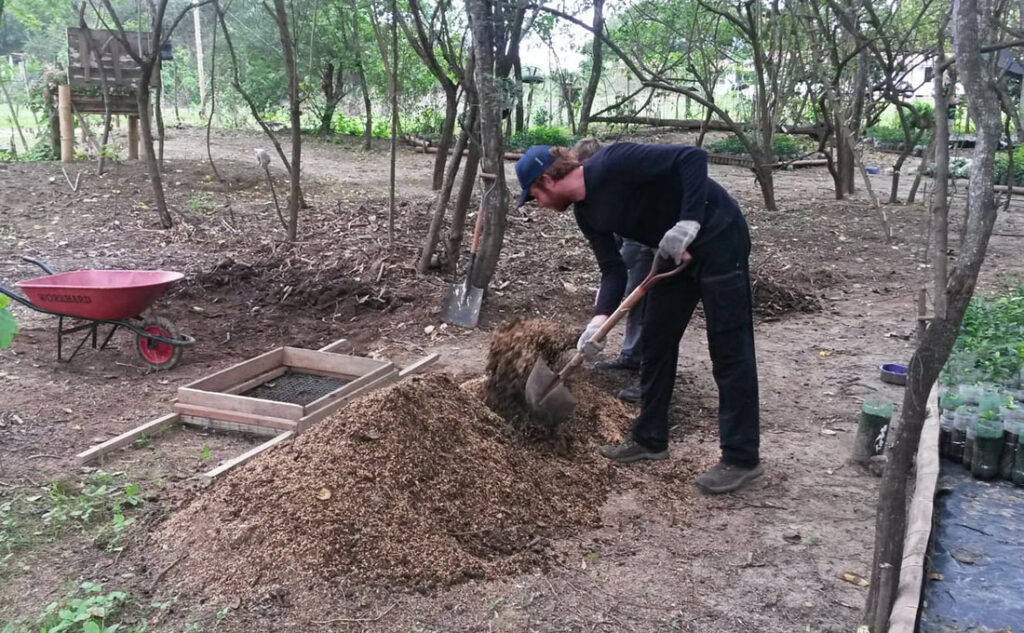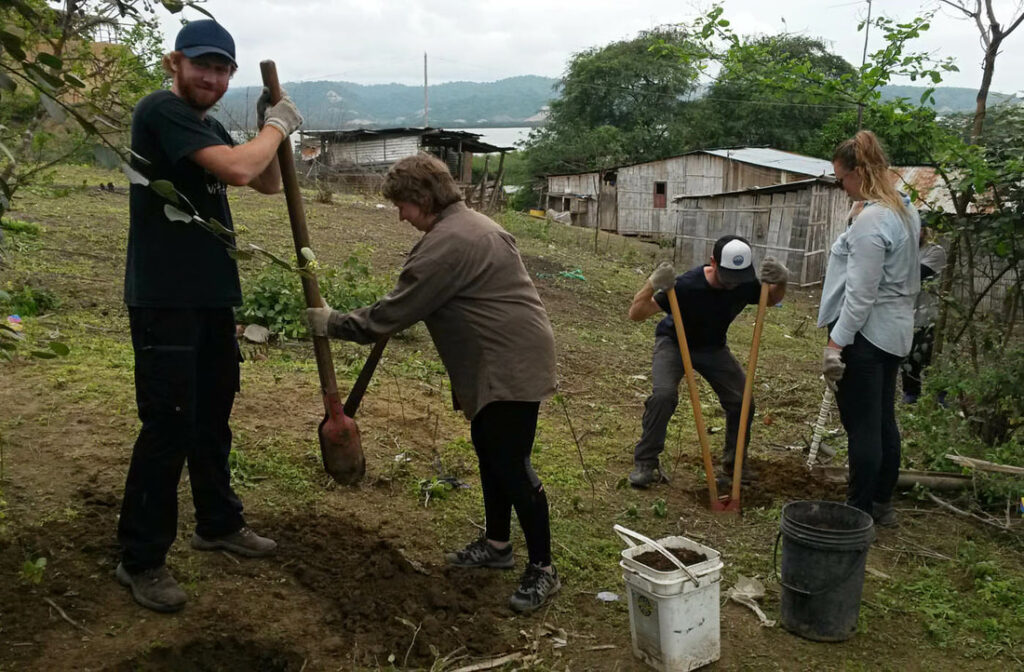January, 2019
I had been inspired by the book The Man Who Planted Trees by Jean Giono, when I arrived in Bahía to participate in Planet Drum’s ecological project. So I was very excited to go out and plant a whole forest of trees. However, reality is always a bit different from what we read in books. Soon I found myself working most of the time in the greenhouse rather than in the field.
But it turns out that the greenhouse is where a very crucial part of the whole tree planting process happens. Despite the fact that cutting bottles, mixing fresh soil, or weeding and sorting out trees is not as romantic as the story about Elzéard Bouffier, I very quickly learned to appreciate the work I was doing. It was quite exciting to imagine that the tiny little tree that I just transplanted could one day grow into big Guachapelí, or that a handful of recently germinated little seedlings could one day become a grove of oranges or maybe several Algarrobo trees that would give shelter to someone from the hot sun, just like those that are now covering the greenhouse which had been planted by Planet Drum some years ago. After realizing all of this, one cannot really question the purpose of the greenhouse work anymore.

We went to plant trees in the local community a few times and also at one of the project’s revegetation sites, which was a really steep slope above a residential neighborhood. Planting a tree in this kind of terrain is physically very exhausting, but that’s where it’s needed most to prevent possible mudslides. I witnessed this risk with my own eyes while digging a hole for a tree. I discovered a wide crack in the soil under the surface, revealing how dangerous the hillside could be for the houses below without a tree root system that could hold it together.

What surprised me the most about Planet Drum’s project is the complexity of environmental work that Program Director Clay Plager-Unger is doing. His goal is not just to plant trees and revegetate risky hillsides. He is trying to do it in cooperation with the local communities so they gain an understanding of the importance of the environment and how they will benefit from the work. He is collaborating with local schools to teach kids to care about the environment. And he is also talking to the authorities and officials in Bahía to get wider support for his activities in the city. This aspect of his work is definitely very energy and time consuming and sometimes can be frustrating. I can only admire his patience and will to carry on.
After all, I can say that I really met my Elzéard Bouffier, just not in the French highlands, but in the dusty Ecuadorian coastal city of Bahía de Caráquez.


Thanks for sharing. I read many of your blog posts, cool, your blog is very good.
Thank you for your sharing. I am worried that I lack creative ideas. It is your article that makes me full of hope. Thank you. But, I have a question, can you help me?
I don’t think the title of your article matches the content lol. Just kidding, mainly because I had some doubts after reading the article.